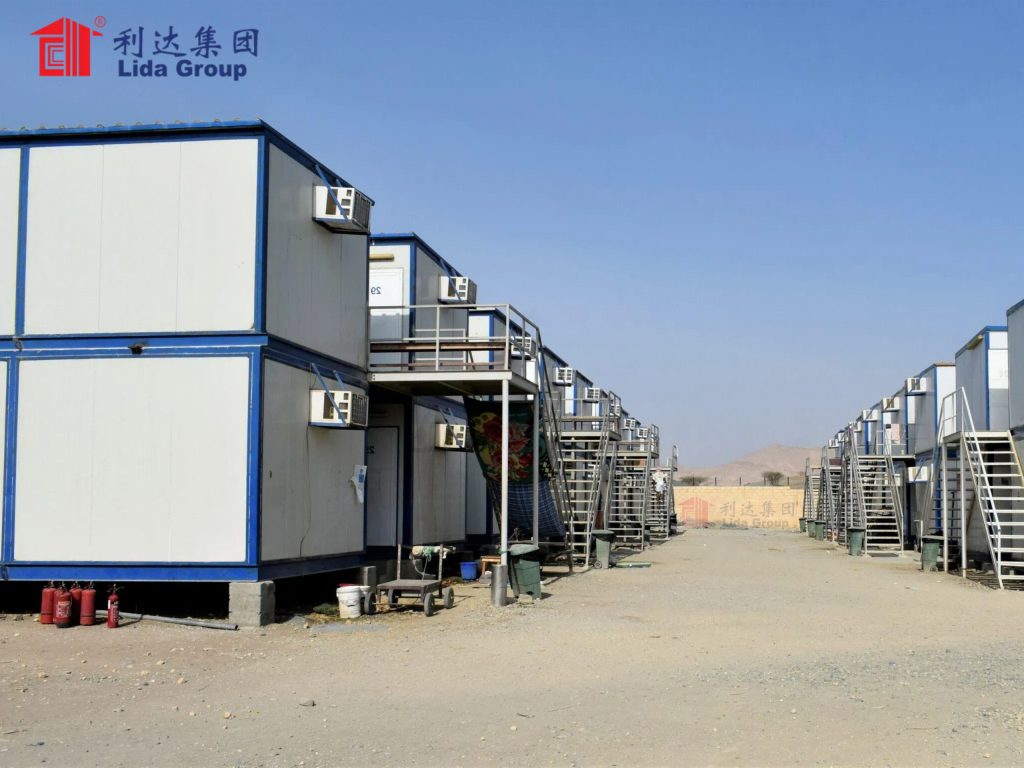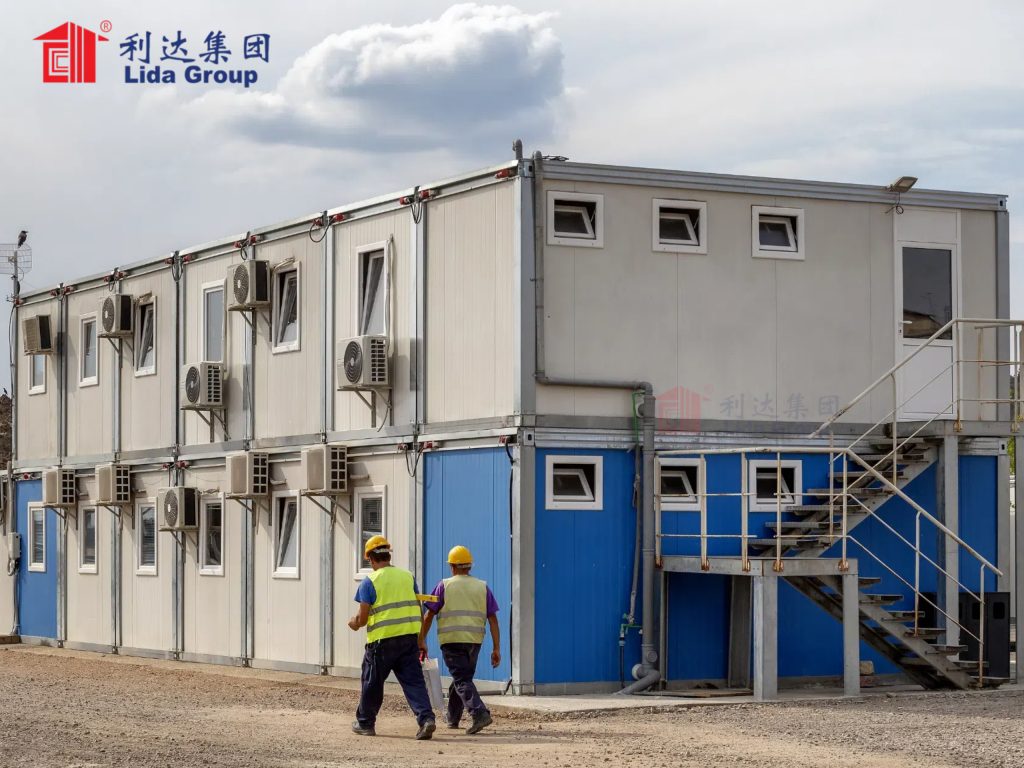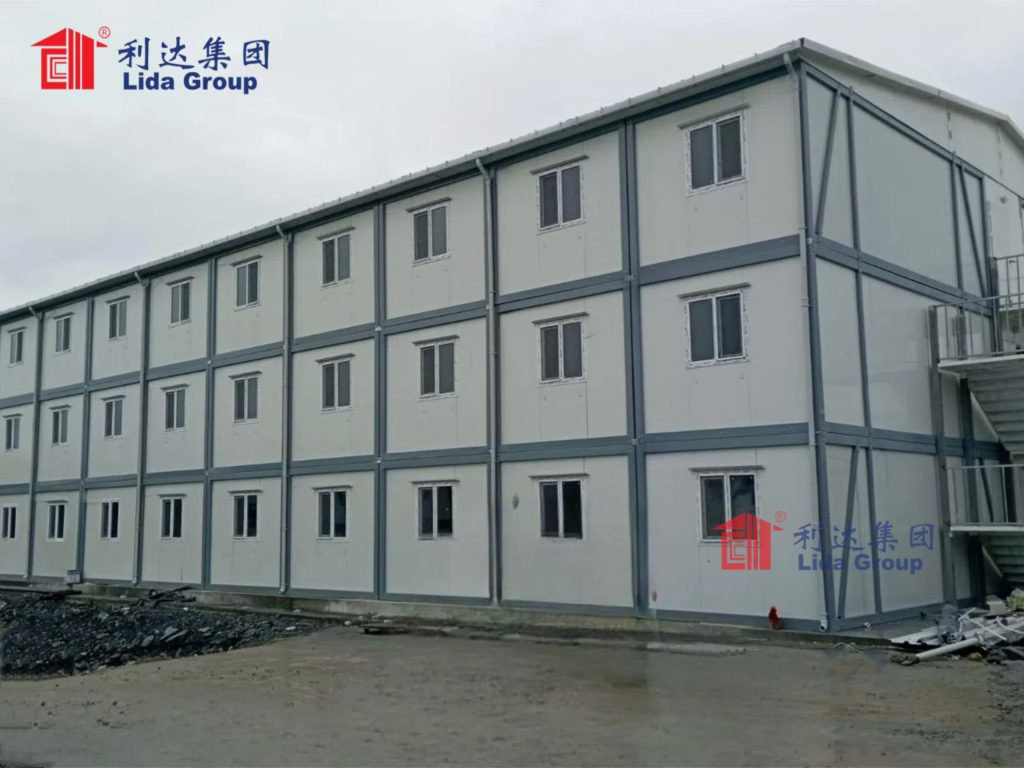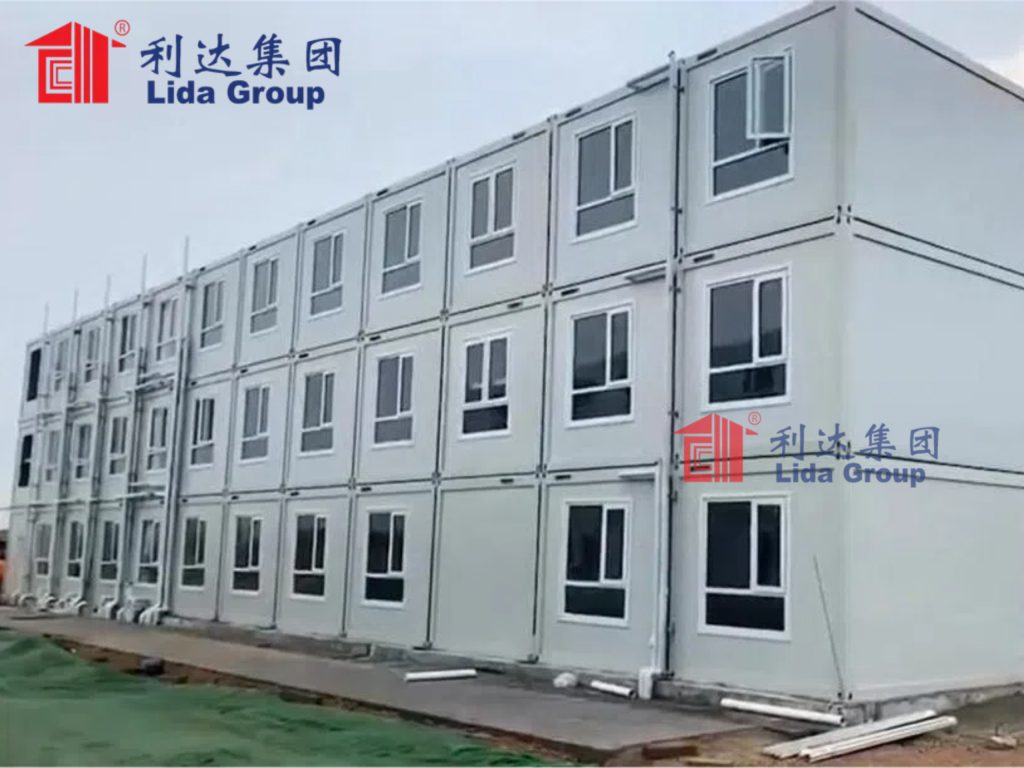Rapidly providing shelter for displaced populations has long been a challenge for humanitarian aid organizations in the aftermath of disasters. Traditional tent camps take time to organize and erect, and are only intended as temporary solutions. More permanent structures still require foundations and extensive on-site construction, delaying the delivery of stable housing for refugees and evacuees. A leading aid nonprofit saw an opportunity to test an innovative new type of rapidly deployable prefabricated housing that can be transported and assembled without heavy equipment or on-site construction. With climate disasters and conflicts continuing to drive mass displacement worldwide, finding alternatives to tents could transform humanitarian relief efforts.
The Lida Group, a social enterprise startup based in Singapore, has developed portable prefab container housing prototypes designed for quick assembly without traditional site work. Their modular units are flat-packed and stack inside standard shipping containers for protected transport. On-site, the pieces simply unfold and interlock together. No heavy machinery, tools, or foundations are needed. The design goals were to create durable shelter that could be deployed in a fraction of the time of tent camps or conventional construction, getting displaced families into stable homes far more rapidly after disasters strike.

An international aid organization, requesting anonymity for this initial testing phase, obtained several prototype units from Lida to conduct field tests of their rapid deployment and liveability. Under the organization’s disaster response program, the units would be stockpiled in strategic global locations ready for quick transport to emergencies worldwide. The organization wanted to evaluate if Lida’s untraditional approach could actually deliver on its claims of being easily assembled without heavy equipment at the site within hours. They also aimed to gauge comfort, durability, and overall suitability of the units for temporary refugee housing applications over several months of occupancy and weather exposure.
The testing site chosen was a large grass lot next to an evacuated industrial area with basic infrastructure still intact. This allowed occupants privacy and independence without true site development needs beyond some fencing and utilities hookups. A local refugee population recently displaced by unrest was participating voluntarily. Fifteen families comprising 67 individuals overall including children and elderly members would live in the Lida prototypes for the duration of the roughly 6-month evaluation period.

Unloading began with the arrival of shipping containers from Lida’s factory in Singapore. Volunteers and refugee participants unpacked the flat-packed housing modules, labeled with assembly instructions, from the containers. As anticipated, no tools or heavy equipment were required other than manual labor. Each family was then able to construct their own 80m2 home entirely from the interlocking panels, beams and trusses, working together and assisted by on-site Lida technicians for guidance. Walls, floors and roofs came together quickly into complete standalone shelters. Whereas a comparable tent city may have taken weeks to organize on the same site, within just eight hours all fifteen Lida homes were fully erected and ready for occupancy.
Habitability was the next key test. Accommodations included sleeping and living spaces, basic cooking/sanitation facilities, and even integrated solar power for lighting and device charging. Families rapidly settled into the new dwellings, expressing relief at having proper roofs over their heads after weeks of uncertainty. Evaluators from the aid organization monitored comfort levels as temperatures varied seasonally. Insulation, ventilation and thermal performance held up well through different climates over the subsequent months. No structural or weatherproofing issues arose. Compared to the anxiety and inconvenience often faced in temporary facilities, occupants reported the Lida units provided a welcomed sense of normalcy and permanence in an otherwise unstable time.

Durability was an open question given the unique stressed skin construction approach using interlocking panels rather than traditional studs and cladding. However, under daily living stresses and occasional severe weather that passed through, the structures remained intact and damage-free. Periodic inspections revealed no warping, sagging or compromised seals over the mid-term observation window. The galvanized steel skin panels proved hardy and weather-resistant as intended by the designers. With proper care and occasional refurbishment, the units appeared quite capable of remaining functional shelters for years if needed.
From the aid organization’s perspective, the testing yielded highly promising results. The ability to rapidly install stable prefab housing at emergency sites without foundations or construction equipment offers immense logistical advantages over conventional solutions. No longer would their workers be delayed waiting for the establishment of temporary tent camps or the slow phasing-in of permanent building sites requiring heavy machinery and utility hookups. Lida’s transportable homes appeared to deliver durable, dignified shelters far faster after crises strike – a key step towards restoring rapid normalcy for displaced communities. With further development and scale, this type of modular prefab approach could potentially transform humanitarian relief capacity globally.

In conclusion, this controlled initial field testing demonstrated the Lida Group’s portable prefab container housing prototypes are capable of providing rapidly deployable temporary shelter for displaced populations far more effectively than tents or traditional on-site construction approaches. Within hours, stable housing was erected by refugees themselves requiring no construction expertise or equipment beyond manual labor. Months of subsequent occupancy revealed durability, comfort and liveability on par with permanent homes. While refinement may continue, the core design concept of interlocking modular panels transported and assembled without foundations has proven its ability to deliver dignified shelter to crisis-affected communities significantly faster than current standard solutions. With modification tailored for specific environments worldwide, this type of prefabricated portable housing shows immense potential to transform how humanitarian aid rapidly shelters displaced populations in the critical weeks after disasters strike.
Through creative engineering applied to humanitarian ends, the Lida Group appears to have developed a highly promising new model with their flat-pack containerized housing units. With further testing, partners such as the evaluating aid organization here could integrate these designs into strategic pre-positioning plans for rapid response to people displaced worldwide by conflicts or climate disasters. For refugees and evacuees desperate for stable roofs, a sheltering approach that restores normalcy within hours rather than weeks could offer immense relief and dignity. This initial field trial showcased how innovation focused on speed of deployment and independence from site preparation can help relief organizations shelter more people faster – ideally getting families settled into homes rather than makeshift camps after facing crises. More evaluations may still be needed, but Lida’s portable prefab concept shows strong potential to reduce human suffering through rapid housing deployment on a global scale.

Related news
-
Festival producers hire roaming prefabricated sandwich panel food courts and merch buildings fast-tracked on-site using Lida Group's dismountable metal support skeletons.
2024-10-12 17:22:53
-
Prefab Container Homes Detachable Container House Flat Pack Container House for Sale Prefabricated-Building
2024-10-10 17:48:24
-
Building officials approve Lida Group’s multi-purpose noncombustible structural steel building system for community facilities prioritizing occupant safety during extreme weather and disasters.
2024-09-30 10:07:06
contact us
- Tel: +86-532-88966982
- Whatsapp: +86-13793209022
- E-mail: sales@lidajituan.com


